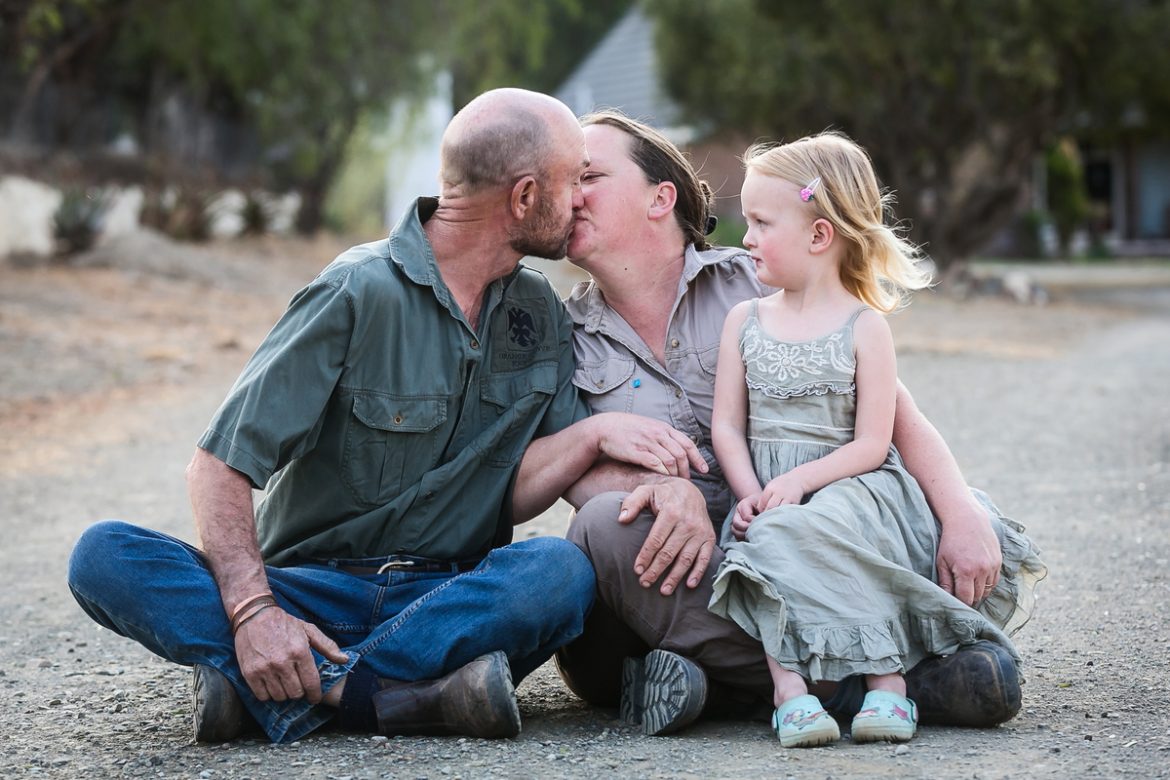I’ve been a little too reliant on convenience lately. My meal subscription box is delivered to my door every Monday, so are my beauty products and lifestyle goods. Often, if I need something, I’ll look no further than my phone’s browser. There is another side of me, though. One that hankers for a simpler life, and not in the convenient sense.
I want to grow my own food, nurture and foster a connection with the land around me. I want to roast peppers straight from the garden, and snap off a branch of aloe vera for my skin. I want to collect eggs straight from the coop outside bubbling with clucks and chicks. I want to know about all the surrounding plant life. I want to live a more self-sustainable, sufficient lifestyle.
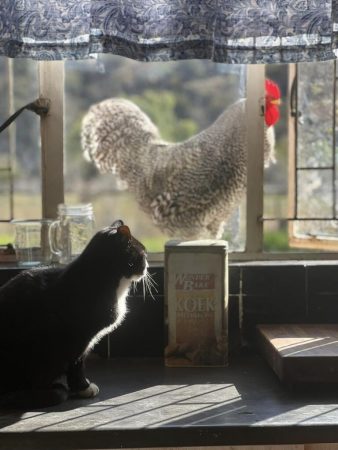
Tracey Michau
Imagine my excitement when I found that there are women doing exactly this in SA. Women, who for decades of their lives, were driven by the rat-race, then decided to choose a different path. One of these women is Tracey Michau, who upped and left her corporate job 10 years ago to live a simpler life. Tracey now lives on her homestead in Cradock (Eastern Cape) with her husband, Toby and their daughter, Savannah. We’ve had the opportunity to chat with Tracey, about her self-sustainable lifestyle, and the benefits of living farm-to-table. Let’s get inspired…
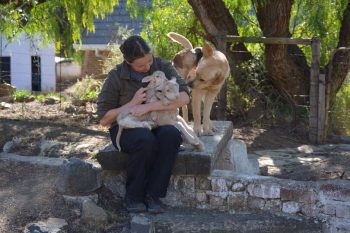
Tracey Michau
Hi Tracy! Let’s put ourselves in your shoes. Run us through a day on the farm?
No two days are the same and that is what I love about farming! I start my mornings by checking on my herd of Indigenous Veld goats, new kids are tagged and documented. My Jersey cows get milked and then I get to making cheese with that milk right away. Cheesemaking is a process of stirring and resting curds, so in between I get some other chores done like processing vegetables from the garden. The afternoons are spent homeschooling our daughter and while she does her work I process orders from my side hustle ‘Cultures For Life’.
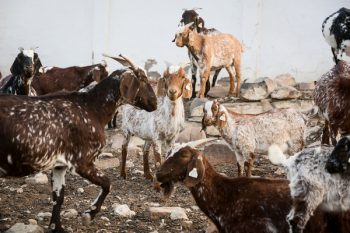
Tracey Michau
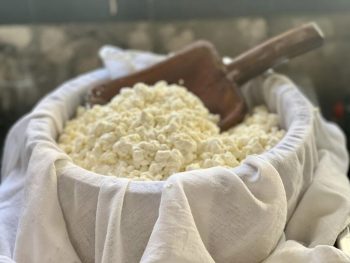
Tracey Michau
Cheesemaking!? Tell me more…
As a hobby cheesemaker, my style has leaned more towards the old ways of cheesemaking such as using wooden cheese moulds. The correct maintenance of wooden equipment promotes the selection of a microbial flora which play an active role in fighting off pathogenic bacteria. Wood is important when it comes to cheesemaking! The cheeses I make are usually just what we enjoy eating. We love a wheel of Gouda, Camembert, Brie, or Cambozola and I love making cheeses using natural cultures such as Filmjölk, Kefir and Skyr. You don’t have to be on a farm to make cheese. All you need to do is sign up for a course through Finest Kind.
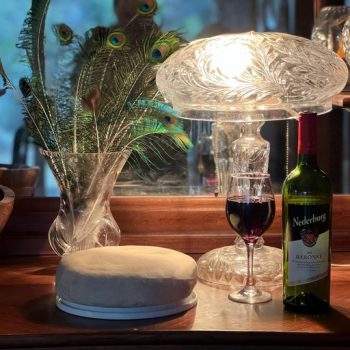
Tracey Michau
What are some of the most valuable lessons that living self-sustainably has taught you?
The most valuable lesson I have learnt is that in order to be truly at peace and happy we need to continuously cultivate and strive towards the lifestyle we want. We all have the skills and the knowledge needed to live a life of our dreams, in my case it was all buried somewhere in the effort to get by in the corporate rat race. By creating the life that we desire we become happy within and rely less on ‘things’ and possessions to fill that gap.
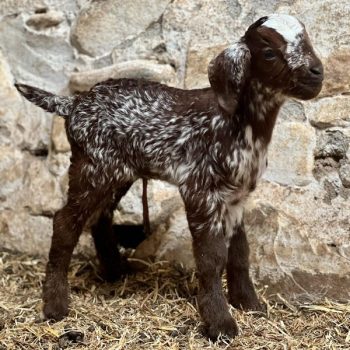
Tracey Michau
What’s it like, homeschooling and raising your daughter on the farm?
My older son was schooled in private schools and my daughter is now being homeschooled. I believe that no one is more invested in educating my children than myself, homeschooling Savannah has been an incredible learning journey for the two of us. Unfortunately, I didn’t have the homeschooling opportunity with my son. Throughout his education, he was labelled ‘inattentive, ADHD’. I believe the education system leaves a lot to be desired and far too many children are mislabelled as ADD and ADHD, when in fact it is the system that is extremely flawed.
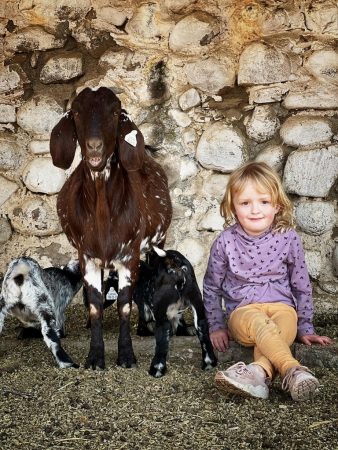
Tracey Michau
You’re a queen of the kitchen, what’s your latest foodie obsession?
My current obsession is incorporating more healthy, fermented foods into our diet and that’s how my side business, Cultures For Life was born. It was founded upon the pursuit of sustainable living and a deeper understanding of traditionally prepared foods. I sought to achieve a better understanding of the connection between how our food is produced, prepared and the benefits it can provide for us.
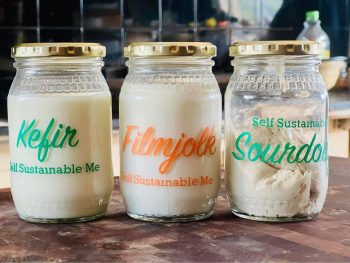
Cultures For Life
My pantry is stocked with nutrient-rich, gut-loving foods like L. Reuteri yoghurt, kefir, sourdough, kombucha and most recently I have started to cultivate Spirulina to produce my own superfood. My goal with Cultures For Life is to provide all of these products to those that would benefit from them and to provide support and inspiration. I believe anyone can become a culture expert and benefit from the health-giving properties that these cultures contain.
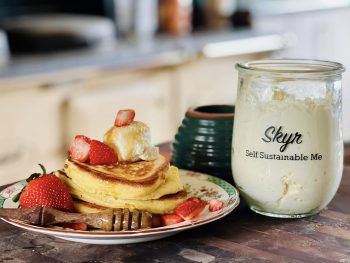
Cultures For Life
What about a cheeky farm-to-table recipe to leave us inspired?
Sure! I recently harvested nettle and it makes a really tasty pesto and is delicious paired with Camembert cheese and sourdough bread or freshly made pasta. I also like to add a little fresh basil. Nettle is incredibly easy to grow, so anyone can do it!
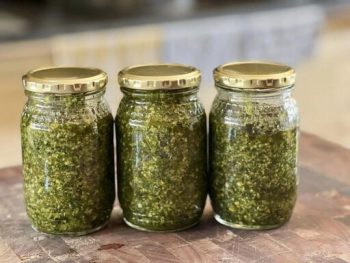
Tracey Michau
Nettle Pesto Recipe
- 200g Nuts (walnuts, macadamia or cashew)
- 150g Parmigiano-Reggiano cheese or any good hard cheese
- 150g Blanched nettle (leaves only with stems removed)
- 340g Olive oil
- 15g Dried lemon powder or 50ml lemon juice
- 3 garlic cloves
- Salt and black pepper to taste
Prepping your nettle:
- Wearing latex or rubber gloves, remove leaves from stems (use stems for tea). Wash leaves and drain.
- In a large saucepan, over medium-high heat, add the leaves. Stir with a wooden spoon and cook until all leaves have wilted and turned dark green, about 2 minutes. Remove cooked nettle.
- Drain nettle leaves and squeeze to remove as much water as possible. Set aside.
Making the pesto:
- In a blender or food processor, coarsely chop walnuts, garlic and Parmesan cheese.
- Add cooked nettles, lemon juice, salt and pepper. Process until well blended.
- With processor running, pour in oil to make a paste.
- Taste and adjust seasoning as desired.
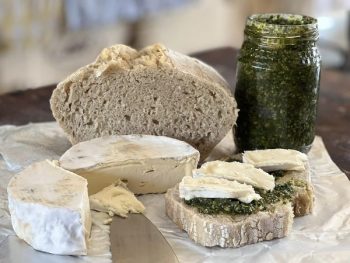
Tracey Michau
Enjoy on pasta, pizza, sandwiches or mixed into sauces or dips. Store in the refrigerator for up to 3 weeks in a well-sealed jar. Or freeze in convenient portion size – consider freezing in ice cube trays for small, easy-to-use portion sizes. Store in the freezer for up to 6 months.
ALSO SEE:
Internet shutdown after woman’s ‘dress code’ death sparks protests
Feature Image: Tracey Michau

